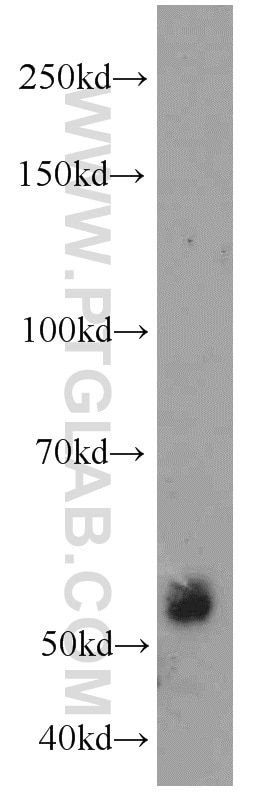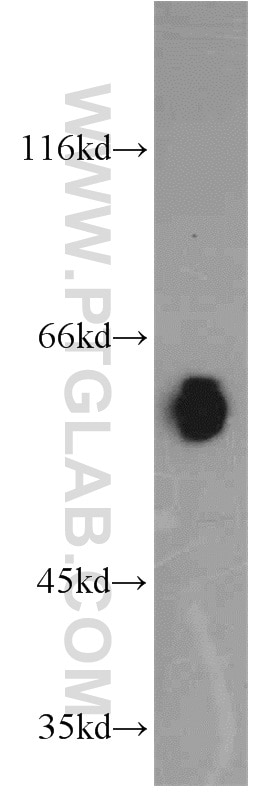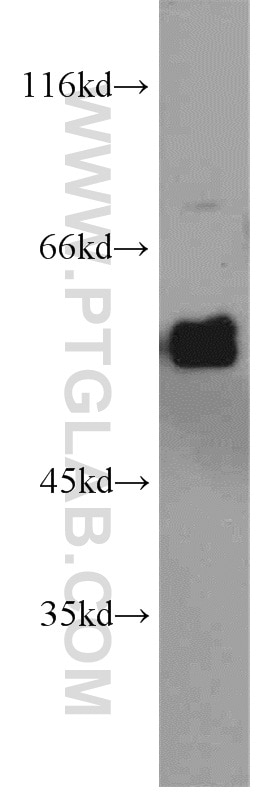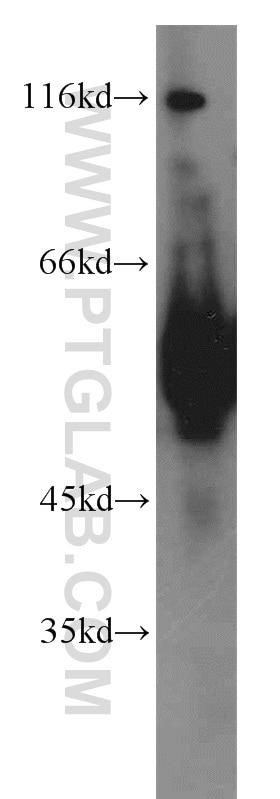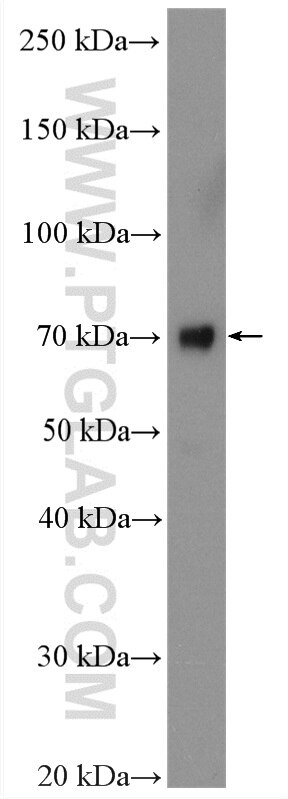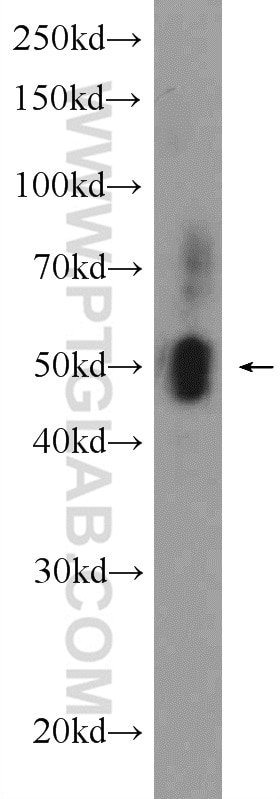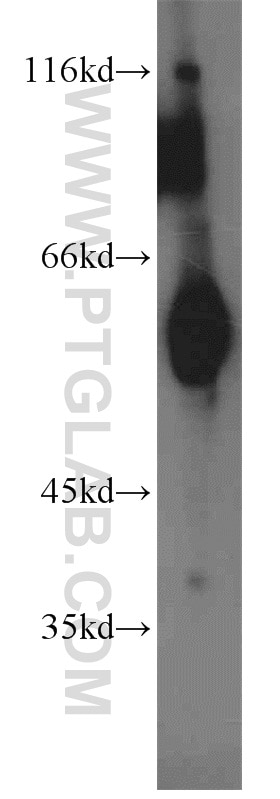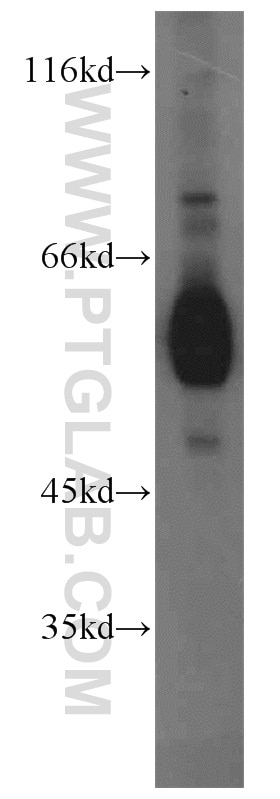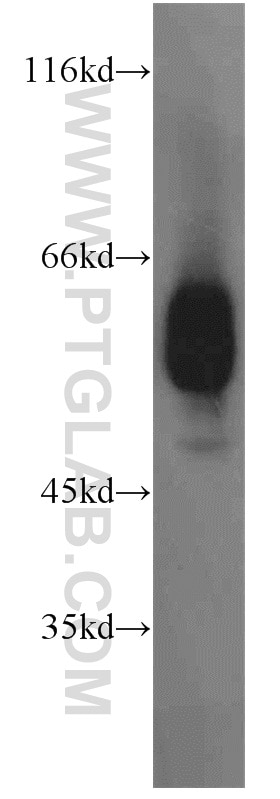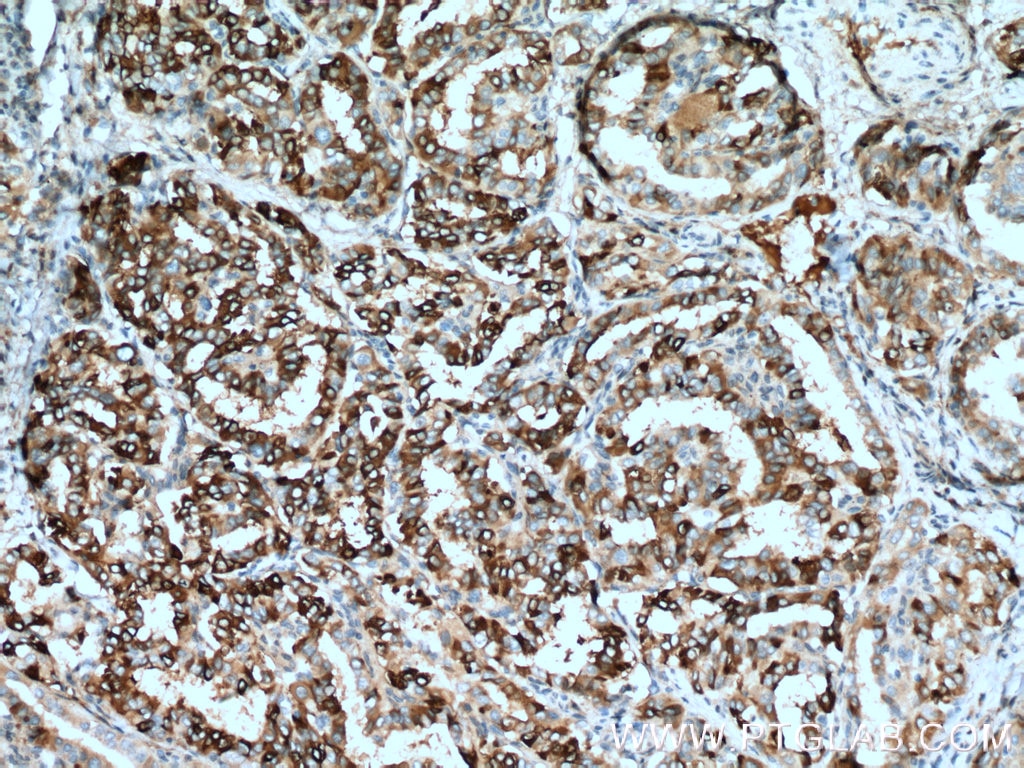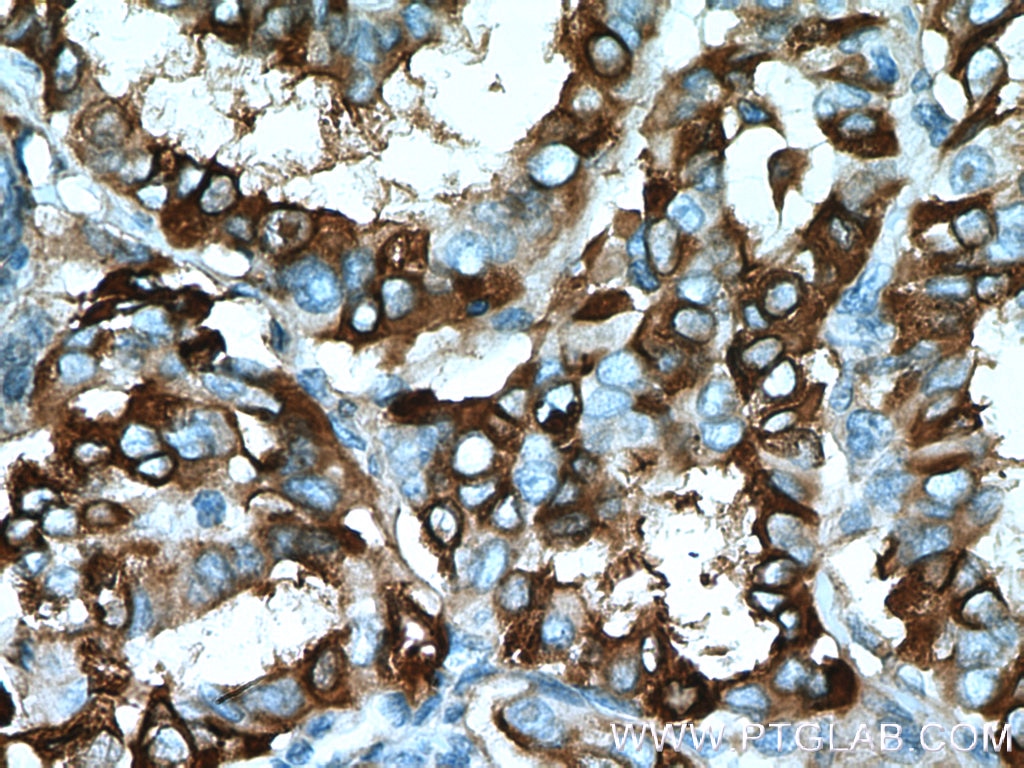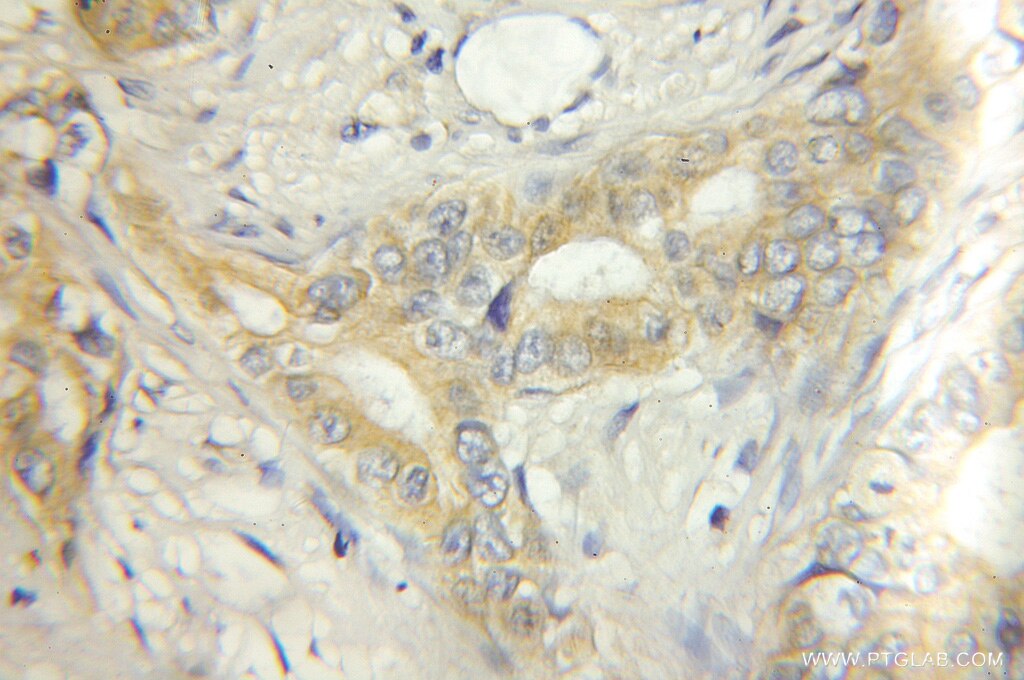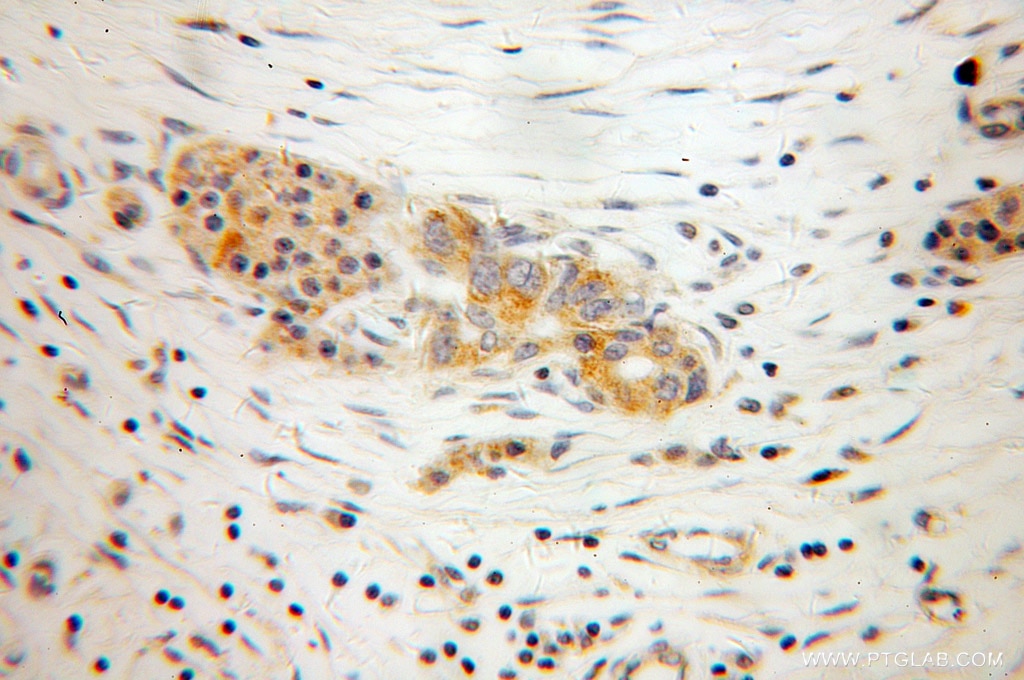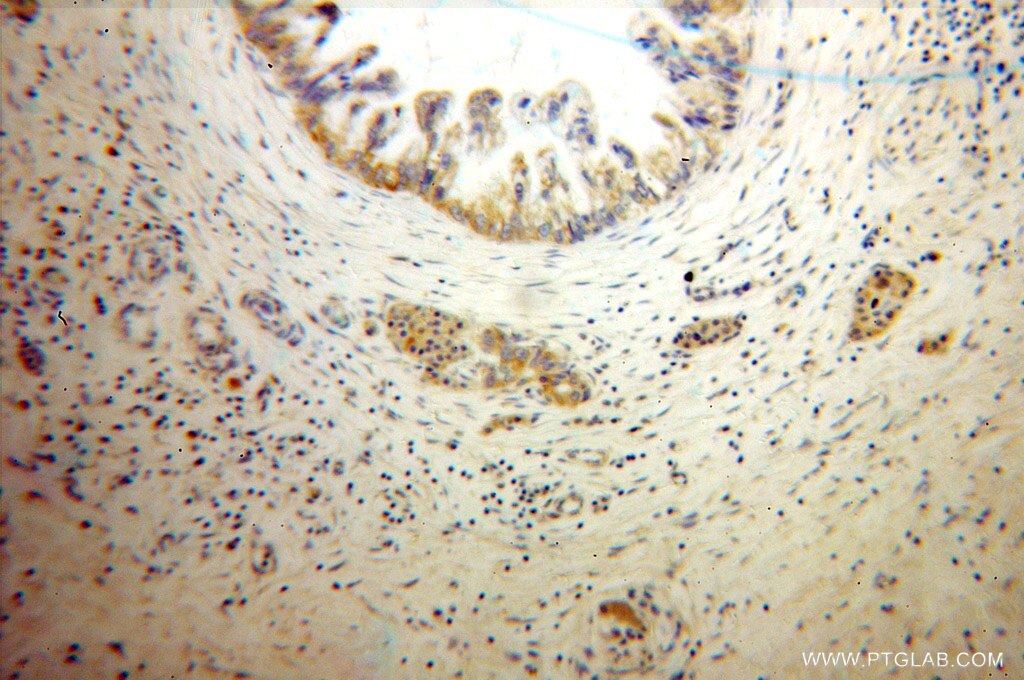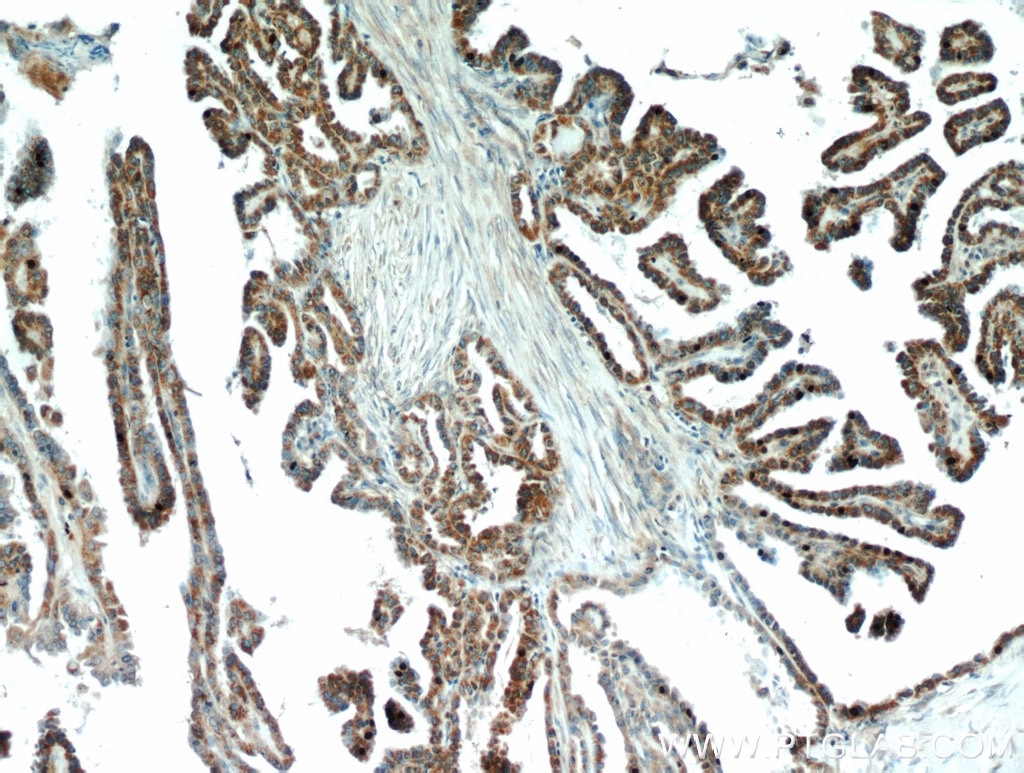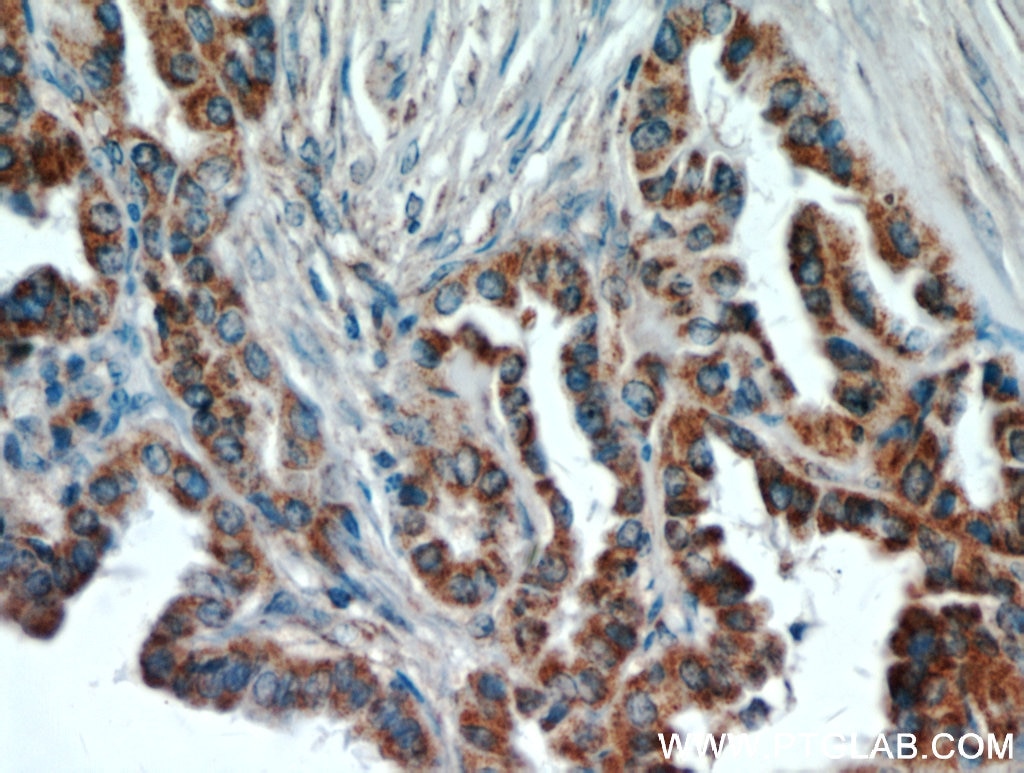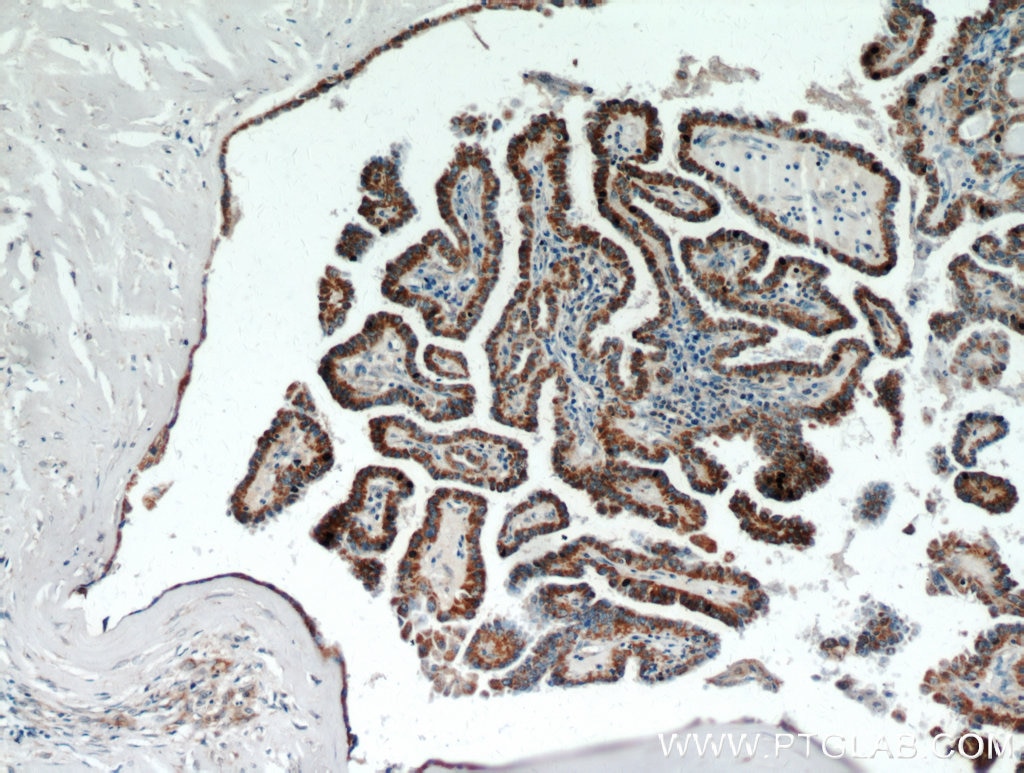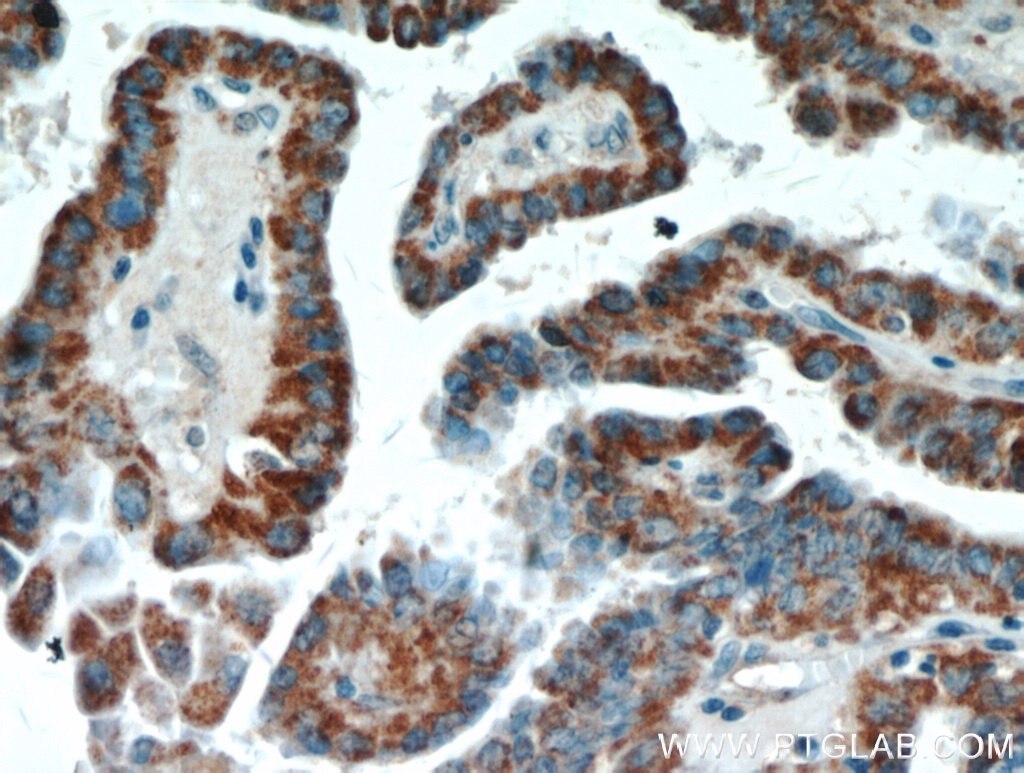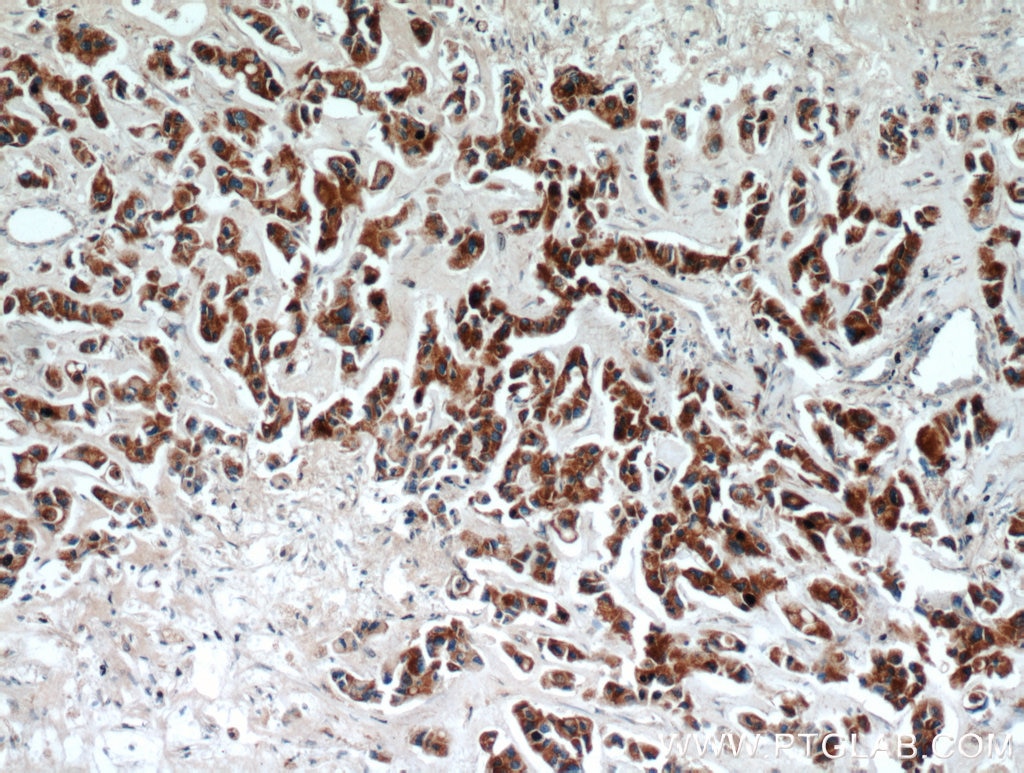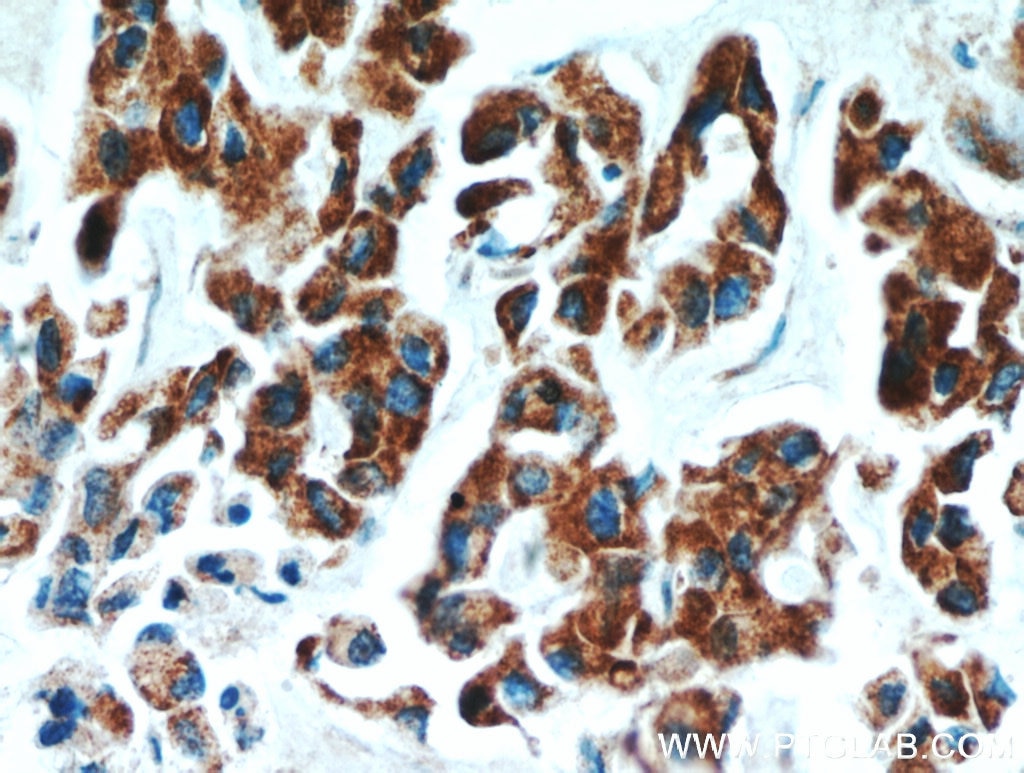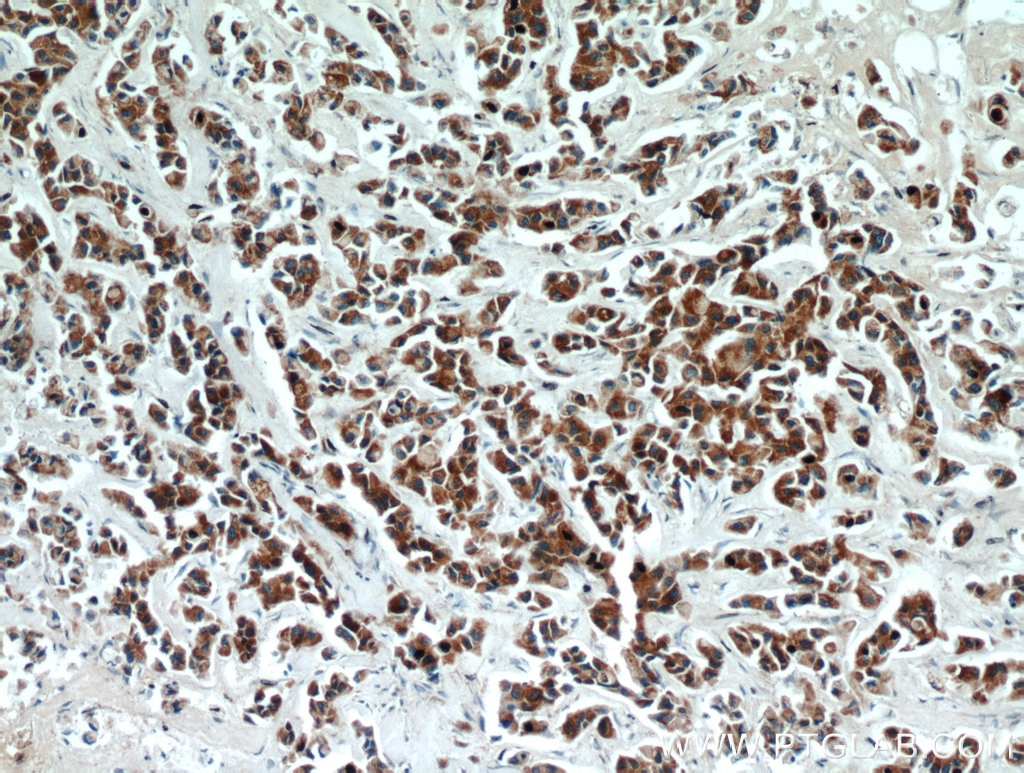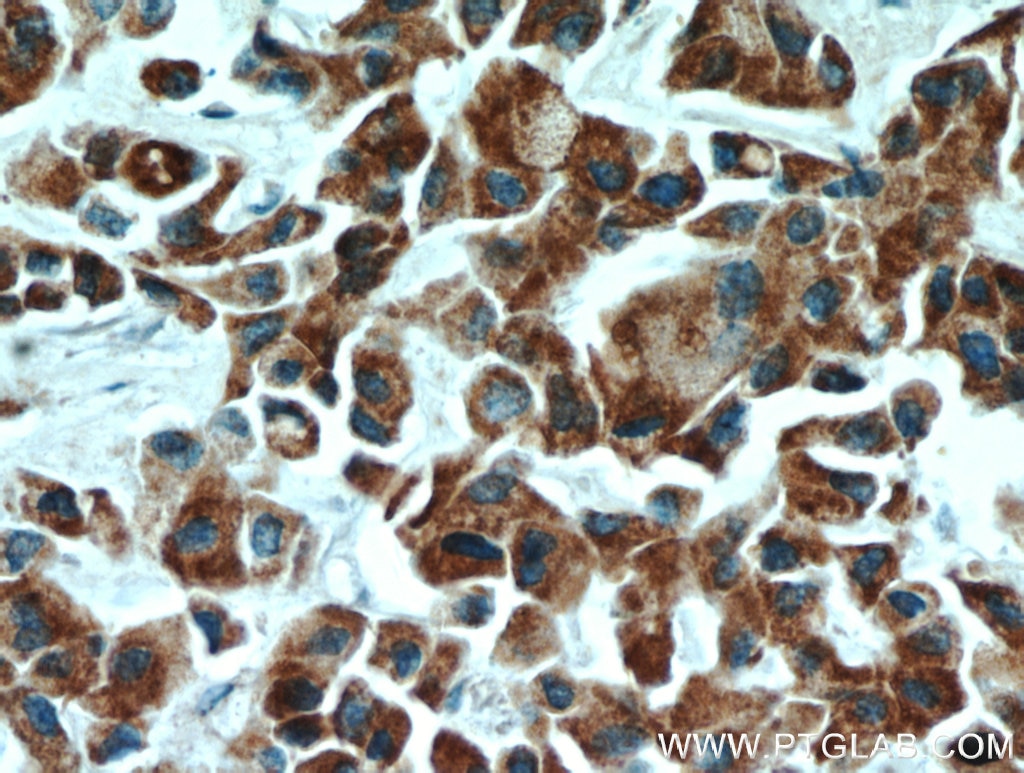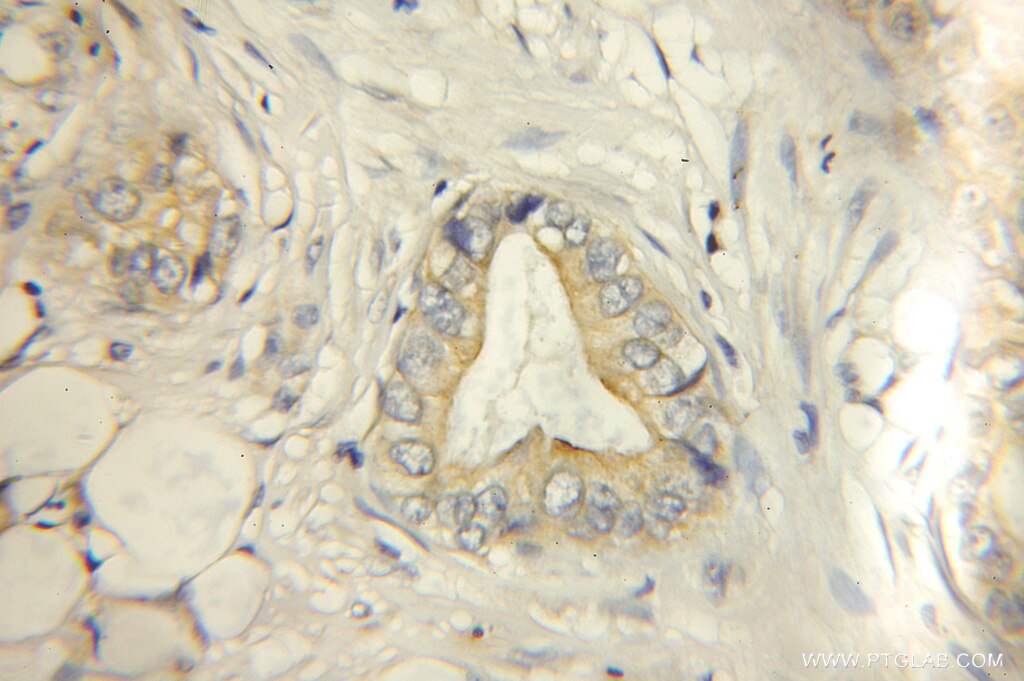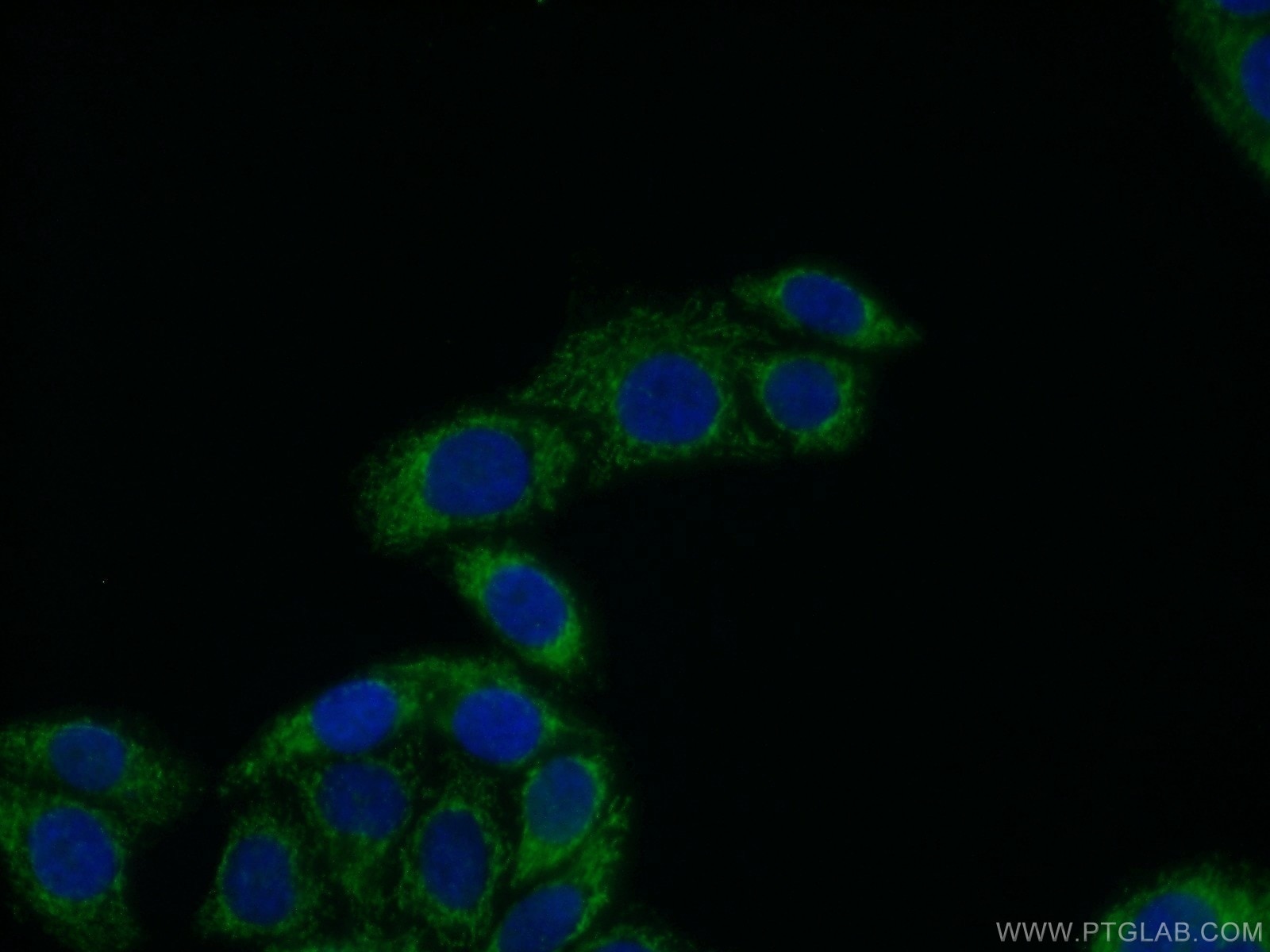Anticorps Polyclonal de lapin anti-ECM1
ECM1 Polyclonal Antibody for WB, IF, IHC, ELISA
Hôte / Isotype
Lapin / IgG
Réactivité testée
Humain, rat, souris et plus (1)
Applications
WB, IHC, IF/ICC, ELISA
Conjugaison
Non conjugué
N° de cat : 11521-1-AP
Synonymes
Galerie de données de validation
Applications testées
| Résultats positifs en WB | cellules A549, cellules A375, cellules HepG2, cellules L02, cellules MCF-7, tissu hépatique de souris, tissu pancréatique de rat, tissu pancréatique de souris, tissu rénal de souris |
| Résultats positifs en IHC | tissu de cancer de la thyroïde humain, tissu de cancer du pancréas humain, tissu de cancer du poumon humain, tissu de cancer du sein humain il est suggéré de démasquer l'antigène avec un tampon de TE buffer pH 9.0; (*) À défaut, 'le démasquage de l'antigène peut être 'effectué avec un tampon citrate pH 6,0. |
| Résultats positifs en IF/ICC | cellules HepG2 |
Dilution recommandée
| Application | Dilution |
|---|---|
| Western Blot (WB) | WB : 1:500-1:2000 |
| Immunohistochimie (IHC) | IHC : 1:100-1:400 |
| Immunofluorescence (IF)/ICC | IF/ICC : 1:50-1:500 |
| It is recommended that this reagent should be titrated in each testing system to obtain optimal results. | |
| Sample-dependent, check data in validation data gallery | |
Applications publiées
| WB | See 10 publications below |
| IHC | See 11 publications below |
| IF | See 5 publications below |
Informations sur le produit
11521-1-AP cible ECM1 dans les applications de WB, IHC, IF/ICC, ELISA et montre une réactivité avec des échantillons Humain, rat, souris
| Réactivité | Humain, rat, souris |
| Réactivité citée | canin, Humain, souris |
| Hôte / Isotype | Lapin / IgG |
| Clonalité | Polyclonal |
| Type | Anticorps |
| Immunogène | ECM1 Protéine recombinante Ag2084 |
| Nom complet | extracellular matrix protein 1 |
| Masse moléculaire calculée | 540 aa, 61 kDa |
| Poids moléculaire observé | 55-61 kDa |
| Numéro d’acquisition GenBank | BC023505 |
| Symbole du gène | ECM1 |
| Identification du gène (NCBI) | 1893 |
| Conjugaison | Non conjugué |
| Forme | Liquide |
| Méthode de purification | Purification par affinité contre l'antigène |
| Tampon de stockage | PBS avec azoture de sodium à 0,02 % et glycérol à 50 % pH 7,3 |
| Conditions de stockage | Stocker à -20°C. Stable pendant un an après l'expédition. L'aliquotage n'est pas nécessaire pour le stockage à -20oC Les 20ul contiennent 0,1% de BSA. |
Informations générales
Extracellular matrix protein 1 (ECM1) is a glycoprotein involved in a number of biological processes such as bone formation, skin differentiation, cell proliferation, and promotes angiostasis.ECM1 is expressed in breast cancer and could participate in cell migration and angiogenesis. Pathologically, ECM1 contributes to the formation and metastasis of several types of cancer including breast, thyroid and hepatocellular cancers.(PMID:21128013) It inhibits MMP9 proteolytic activity. ECM1 protein is a possible trigger for angiogenesis, tumor progression and malignancies(PMID:21497598).
Protocole
| Product Specific Protocols | |
|---|---|
| WB protocol for ECM1 antibody 11521-1-AP | Download protocol |
| IHC protocol for ECM1 antibody 11521-1-AP | Download protocol |
| IF protocol for ECM1 antibody 11521-1-AP | Download protocol |
| Standard Protocols | |
|---|---|
| Click here to view our Standard Protocols |
Publications
| Species | Application | Title |
|---|---|---|
Dev Cell Spatial Control of Primary Ciliogenesis by Subdistal Appendages Alters Sensation-Associated Properties of Cilia. | ||
Oncogene Extracellular matrix protein 1 promotes cell metastasis and glucose metabolism by inducing integrin β4/FAK/SOX2/HIF-1α signaling pathway in gastric cancer. | ||
J Biol Chem Phospholipid scramblase 1 is secreted by a lipid raft-dependent pathway and interacts with the extracellular matrix protein 1 in the dermal epidermal junction zone of human skin. | ||
Am J Transl Res miR-23a-5p inhibits cell proliferation and invasion in pancreatic ductal adenocarcinoma by suppressing ECM1 expression. | ||
Food Chem Toxicol MiR-92a antagonized the facilitation effect of extracellular matrix protein 1 in GC metastasis through targeting its 3'UTR region. | ||
Matrix Biol ECM1 interacts with fibulin-3 and the beta 3 chain of laminin 332 through its serum albumin subdomain-like 2 domain. |
